Do you have a question about the ZyXEL Communications MGS-3712F and is the answer not in the manual?
Provides essential safety guidelines for using the switch, covering water, environment, handling, and electrical safety.
Provides a step-by-step guide to configuring DHCP snooping on the switch for network security.
Guides users on configuring the switch to forward DHCP client requests to a specific DHCP server.
Introduces the HTML-based interface for switch setup and management using a web browser.
Introduces the web configurator as an HTML-based management interface for easy switch setup and management.
Details the procedure for accessing the switch's web configurator by entering its IP address in a web browser.
Provides instructions on how to reset the switch to its factory defaults or reload a configuration file.
Details how to configure the switch's management IP address for network access and management purposes.
Guides on configuring the switch's IP address, default gateway, DNS server, and management VLAN ID.
Explains how to configure individual switch port settings, including speed, duplex, flow control, and BPDU control.
Covers the configuration of 802.1Q tagged and port-based VLANs for network segmentation.
Covers the configuration and management of STP, RSTP, and MSTP to prevent network loops.
Explains how to logically aggregate physical links to form a single, higher-bandwidth link.
Covers the configuration of IEEE 802.1x and MAC authentication methods for client access validation.
Details how to set up port security to control access based on MAC addresses and limit learned MAC addresses per port.
Explains VLAN stacking (Q-in-Q) for service providers to distinguish multiple customer VLANs with identical IDs.
Details the configuration of Authentication, Authorization, and Accounting settings using RADIUS and TACACS+ servers.
Explains how to use IP source guard to filter unauthorized DHCP and ARP packets, including DHCP snooping and ARP inspection.
Explains how to configure Layer 2 protocol tunneling (L2PT) for tunneling STP, CDP, and VTP packets across a service provider network.
Explains IEEE 802.1Q tagged VLANs, frame formats, and VLAN ID concepts for network segmentation.
Details how to use static VLANs to decide frame forwarding based on VLAN tags or port membership.
Details the steps to configure subnet-based VLANs, including priority and VLAN ID assignments.
Guides on configuring protocol-based VLANs to manage traffic based on specific protocols for enhanced network control.
Explains port-based VLANs where packet forwarding is based on destination MAC address and associated port.
Details how to manually enter MAC addresses in the MAC address table to control port access and reduce broadcasting.
Guides on configuring rules to forward specific multicast frames, such as streaming or control frames, to designated ports.
Describes how to set up MAC address port filtering to sift traffic based on source and destination MAC addresses and VLAN group ID.
Explains how (R)STP detects and breaks network loops, providing backup links and ensuring single paths.
Guides on activating STP modes (RSTP, MRSTP, MSTP) on the switch through the configuration screen.
Details the process of configuring RSTP settings on the switch for faster network convergence.
Guides on configuring bandwidth limits for ingress and egress traffic rates on switch ports.
Details how to limit broadcast, multicast, and DLF packets per second to prevent network disruptions.
Explains how to set up port mirroring to copy traffic to a monitor port for analysis without interference.
Introduces link aggregation (trunking) as grouping physical ports into a single logical link for higher capacity.
Guides on configuring static link aggregation by selecting groups, criteria, and assigning ports.
Provides a practical example of creating a static port trunk group for a range of ports.
Explains port authentication methods like IEEE 802.1x and MAC authentication using external RADIUS servers.
Details the process of client authentication via IEEE 802.1x, involving validation through a username and password.
Describes MAC authentication, which uses MAC addresses and configured passwords for client validation.
Guides on enabling port authentication methods and configuring RADIUS server settings.
Details the steps to activate IEEE 802.1x security on the switch and individual ports.
Guides on activating MAC authentication on the switch and configuring its settings.
Explains port security's function to allow only authorized MAC addresses (dynamic or static) to pass through a port.
Details how to enable port security, manage learned MAC addresses, and freeze MAC addresses.
Guides on defining classifiers to sort traffic into flows based on criteria like source/destination addresses and ports.
Guides on configuring policy rules to define actions for classified traffic, referencing classifier setup.
Guides on configuring queuing methods (SPQ, WFQ, WRR) and assigning weights to ports for traffic management.
Explains VLAN stacking (Q-in-Q) for service providers to distinguish multiple customer VLANs with identical IDs.
Guides on enabling and configuring VLAN stacking settings on the switch.
Explains port-based Q-in-Q, allowing the switch to apply the same outer VLAN tag to frames from the same port, regardless of inner VLAN IDs.
Describes selective Q-in-Q, which allows adding different outer VLAN tags based on inner VLAN tags for incoming frames on a port.
Explains IGMP snooping's ability to learn multicast group membership and forward traffic efficiently, reducing network load.
Guides on configuring IGMP snooping settings, including active mode, querier settings, and host timeouts.
Details how to configure IGMP snooping for specific VLANs or in auto mode for automatic learning of multicast group membership.
Guides on creating multicast VLANs and selecting receiver and source ports for each multicast VLAN using the MVR screen.
Details how to configure MVR IP multicast group addresses, including source and receiver ports, and tagging options.
Explains the AAA processes: Authentication, Authorization, and Accounting for managing user access and activity on the switch.
Compares RADIUS and TACACS+ security protocols used for external user authentication and authorization.
Introduces the AAA screens for enabling authentication, authorization, and accounting services.
Guides on configuring RADIUS server settings for authentication and accounting purposes.
Details how to configure TACACS+ server settings for authentication and accounting services.
Covers the configuration of authentication, authorization, and accounting settings on the switch, including method priorities.
Explains IP source guard's role in distinguishing authorized and unauthorized DHCP and ARP packets using a binding table.
Details DHCP snooping for filtering unauthorized DHCP packets and building a binding table dynamically.
Guides on enabling DHCP snooping on the switch and configuring DHCP relay option 82.
Explains ARP inspection for filtering unauthorized ARP packets to prevent man-in-the-middle attacks.
Provides steps to configure ARP inspection, including enabling DHCP snooping and trusted/untrusted ports.
Explains how IP source guard uses DHCP snooping and ARP inspection bindings to distinguish authorized and unauthorized packets.
Guides on managing static bindings for DHCP snooping and ARP inspection, uniquely identified by MAC address and VLAN ID.
Details how to enable DHCP snooping on the switch and configure the DHCP snooping database.
Explains how to specify trusted or untrusted ports for DHCP snooping and set the maximum rate for DHCP packets.
Guides on enabling DHCP snooping on each VLAN and specifying whether to add DHCP relay agent option 82 information.
Guides on enabling ARP inspection and configuring settings for ARP inspection logs, including filter aging time and buffer size.
Explains how to specify trusted or untrusted ports for ARP inspection and set the maximum packet rate.
Guides on enabling ARP inspection on each VLAN and specifying when log messages are generated for ARP packets.
Details how to enable the loop guard feature on the switch and its ports, noting it cannot be enabled with STP.
Guides on enabling the VLAN mapping feature on the switch and its ports.
Details how to configure VLAN mapping rules, including port, VID, translated VID, and priority settings.
Explains Layer 2 Protocol Tunneling (L2PT) for tunneling STP, CDP, and VTP packets across a service provider network.
Guides on configuring Layer 2 protocol tunneling, including destination MAC address and port settings.
Covers the configuration of static routes for enabling the switch to communicate with remote management stations.
Explains how Differentiated Services (DiffServ) fits into QoS strategy and configures traffic policing.
| Brand | ZyXEL Communications |
|---|---|
| Model | MGS-3712F |
| Category | Switch |
| Language | English |
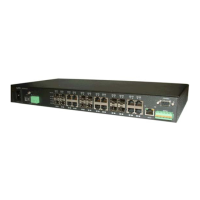
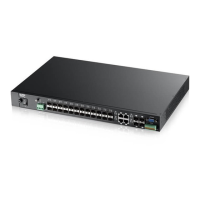
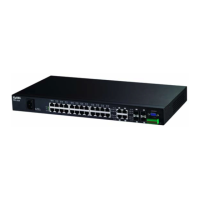
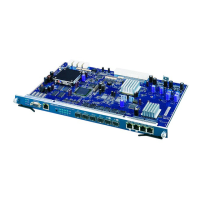
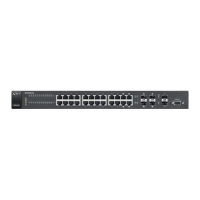
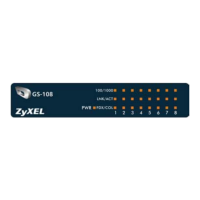
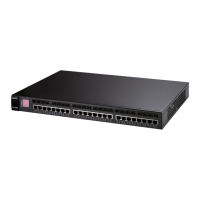
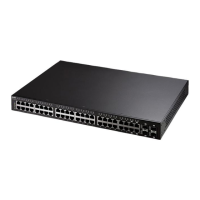



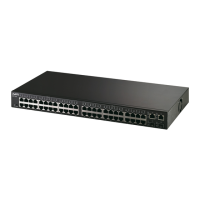
